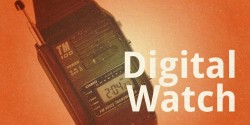Apple held its perennial fall unveiling today, and amongst the updated products on display were a new, bigger iPad Pro and a fresh Apple TV. Of course, you can listen to internet radio on an iPad, though I don’t see how the iPad Pro will be any better for that application than any other model.
I am a little intrigued by the new Apple TV, which is a product that has sorely needed a refresh for a while. Though I’m now a Chromecast and Amazon Fire TV user (and I owe you a review of Fire TV radio apps), before getting those devices I considered Apple TV several times, but was put off by how infrequently Apple updates it, apparently treating it as a “hobby” rather than an important product.
Apple has provided a pretty nice ecosystem for listening to internet radio and podcasts via iTunes on MacBooks and iMacs for quite some time. Apple TV has shipped with the Radio app pretty much since the beginning of the product line, which brings in streaming stations in addition to Apple’s own iTunes Radio. It also features a dedicated podcasts app.
Frustratingly for current Apple TV owners, up to now there has been no direct access to Beats 1 Radio. The new version of this set-top device adds Apple Music, which includes Beats 1. Though I haven’t seen the new device yet, I presume and hope that Apple retains the Radio app, too. At the same time, a new App Store means that third-party radio apps should become available, potentially expanding the range of audio entertainment options.
At a starting price of $149, the new Apple TV is a much pricier option for living room internet radio compared to comparable competitors like Roku. Of course, Apple TV is much more than radio (as all these set-top devices are), so the added gaming and streaming video features are likely the principal selling points, along with the tight integration with other Apple devices and services, like Apple Music.
I don’t think I’ll be buying a new Apple TV, but I’d be glad to take it for a test ride and review if one somehow crosses my path.
John Anderson on DTS/iBiquity Deal
HD Radio historian and expert John Anderson has weighed in on DTS’s acquisition of iBiquity last week. He observes that the sale likely saved iBiquity from “a bailout (presumably from broadcasters) or trusteeship.”
He also notes that most of the research and development on HD Radio has come from broadcasters, which leads him to wonder, “Will these and other development-partners continue to throw resources into a system now held by a non-broadcast company with its own Wall Street presence?”
Anderson doesn’t foresee any major changes in the near term, since iBiquity is retaining its current corporate structure, though he does spell out some best and worst-case scenarios. I recommending checking out his post.
HD Radio Adoption Rate Is Like Color TV?
Speaking of HD Radio, Radio Magazine talked with the recently retired SVP of engineering for CBS Radio, Glynn Walden, who has been a long-time advocate of that technology. He compared the slow adoption of that technology to that of the adoption rates of FM radio in the 1950s and color TV in the 1960s, which each took well more than a decade to catch on. It’s an interesting parallel, though I also think that technologies are adopted a much more rapid rate now, more than fifty years after color TV’s debut.
Comparing HD to FM is like comparing touch-tone dialing to smartphones. Touch tone was introduced in 1963 and it wasn’t widely used until the breakup of Ma Bell in the 1980s. Whereas the first modern smartphone (Palm Treo 650) was arguably introduced in 2004, leading to 50% adoption rate just a decade later.
Consumers generally buy, upgrade and replace their technology more often than they did fifty years ago, in part because it’s all much cheaper in real dollars than it was then. HD Radio hasn’t been adopted as quickly as smartphones because it doesn’t offer significant upgrades over regular broadcast–especially on FM–and those upgrades, like additional channels, are not as easy to access because of the compromises of squeezing HD into the existing analog radio bands.
As smartphones show, a new consumer technology platform really shouldn’t take more than a decade to find wide adoption. That seemed like a reasonable span of time in the 1960s, or even the 1980s. But in the post-DVD era (at that time the most quickly adopted consumer electronics platform in history) HD Radio’s time to adoption is glacial and more indicative of fundamental flaws than anything else.



